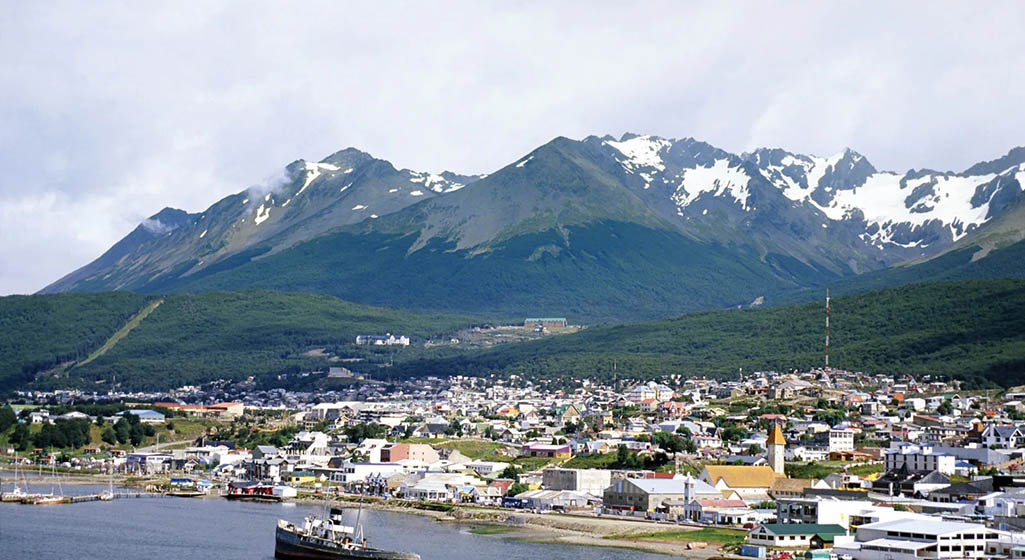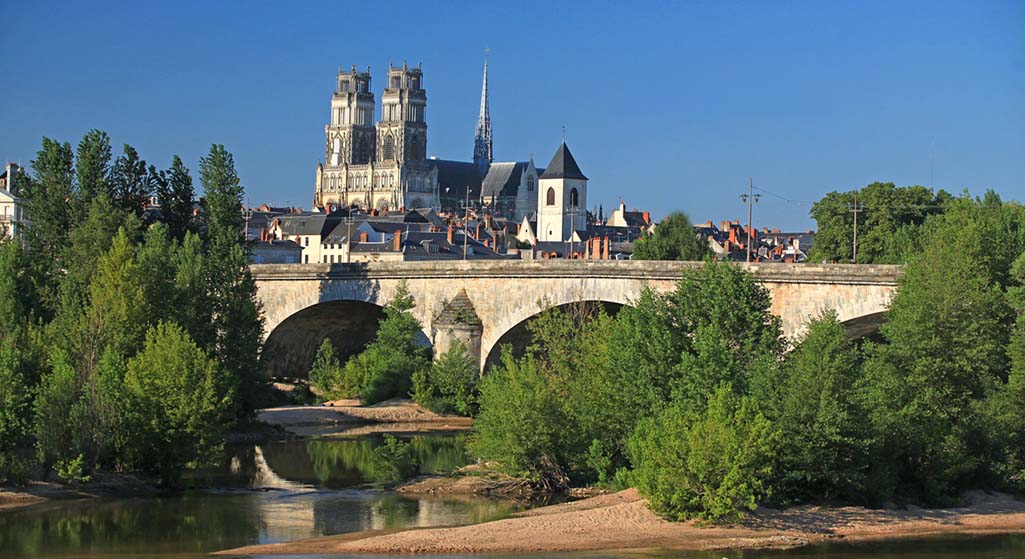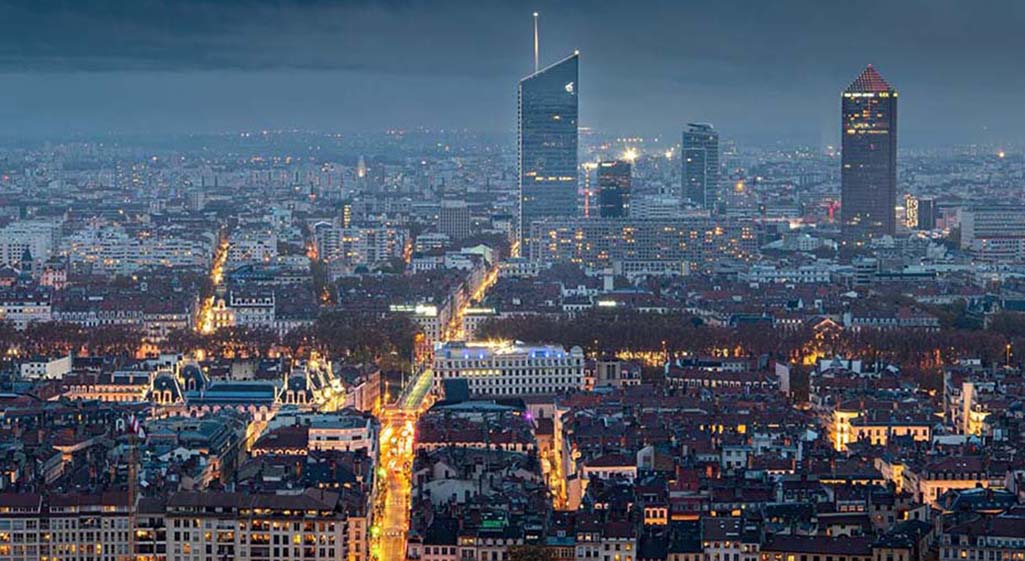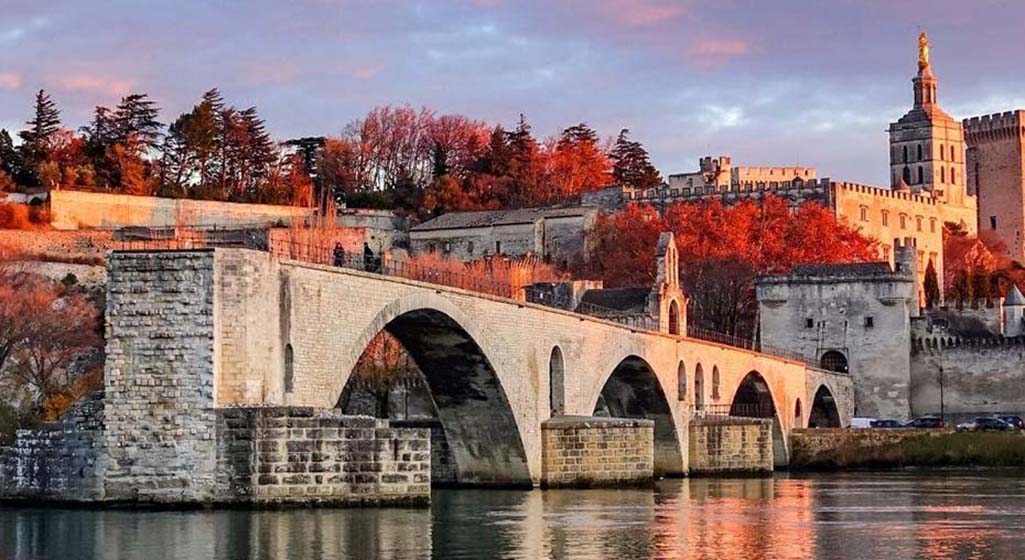Ushuaia, located at the southernmost tip of Argentina, is famously known as the “End of the World.” This city, situated at the edge of the South American continent, is a dream destination for many travelers seeking adventure and natural beauty. As the southernmost city in the world, Ushuaia offers unparalleled experiences with its stunning landscapes and unique geographical location.
Where is Ushuaia Located?
Ushuaia is located in the Argentine province of Tierra del Fuego, which is part of the Tierra del Fuego archipelago. Positioned at a latitude of 54 degrees south and a longitude of 68 degrees west, it lies in the southernmost region of South America, close to Antarctica. The city is nestled between the Andes Mountains and the Beagle Channel, which connects the Atlantic and Pacific Oceans. Although Ushuaia began as a remote fishing village, it has now evolved into a renowned tourist destination, attracting visitors from all over the globe.
The city’s unique location, just a few hundred kilometers from the Antarctic continent, gives it a distinct climate and environment. Ushuaia experiences a subpolar oceanic climate with cold, windy winters and cool, wet summers. Its dramatic landscapes and extreme southern position make it an ideal base for exploring the last great wilderness areas on Earth.
What Can You Do in Ushuaia?
In Ushuaia, there are numerous activities and attractions to explore, ranging from boat tours on the Beagle Channel to hiking in Tierra del Fuego National Park. Here’s a closer look at some of the top experiences:
1. Beagle Channel Boat Tour
The Beagle Channel is one of Ushuaia’s most famous natural features. This channel stretches for 240 kilometers and acts as a boundary between Argentina and Chile. A boat tour of the Beagle Channel offers breathtaking views of its unique landscapes and wildlife.
Bird Island
Bird Island, or Isla de los Pájaros, is one of the most captivating stops on the Beagle Channel tour. This island is renowned for its rich avian population, making it a birdwatcher’s paradise. As you approach Bird Island, you’ll be greeted by the sight of thousands of seabirds in flight and perched along the rocky shores.
Seabird Species: The island is home to a diverse array of seabirds, including cormorants, seagulls, and various species of tern. The cormorants, with their distinctive black plumage, are especially notable as they spread their wings to dry after diving for fish. Seagulls, with their characteristic calls and graceful glides, add to the dynamic atmosphere of the island.
Birdwatching and Photography: The island’s vibrant birdlife creates a lively and visually stunning environment. The contrast between the dark, jagged rocks and the white and black feathers of the birds makes for striking photographs. As you navigate around the island, you’ll have plenty of opportunities to capture close-up shots of the birds in their natural habitat. Observing their behaviors, such as nesting, feeding, and interacting with each other, provides a fascinating insight into their daily lives.
Seal Island
Seal Island, or Isla de los Lobos, is another highlight of the Beagle Channel tour. This island is home to a large population of sea lions, offering visitors a chance to observe these playful marine mammals up close.
Sea Lion Behavior: On Seal Island, you can watch sea lions lounging on the rocks, basking in the sun, or engaging in playful interactions in the water. The sea lions are known for their social behavior, often seen in groups engaging in activities such as playing, grooming, and resting. Their expressive faces and dynamic movements provide excellent opportunities for wildlife photography.
The Vibrant Ecosystem: Seal Island’s ecosystem is vibrant and dynamic, with the sea lions being the main attraction. The contrast between the sea lions’ dark fur and the light-colored rocks of the island adds to the visual appeal. The sound of their barks and the splash of their movements create a lively atmosphere, enhancing the overall experience of the tour.
The Lighthouse at Les Eclaireurs
The Les Eclaireurs Lighthouse, often referred to as the “Lighthouse at the End of the World,” is an iconic landmark located on a small island in the Beagle Channel. Built in 1920, this historic lighthouse stands as a symbol of the region’s maritime heritage.
Architectural Significance: The lighthouse’s red-and-white stripes make it particularly striking against the backdrop of the ocean and surrounding mountains. Its design is simple yet functional, guiding ships safely through the treacherous waters of the channel. Although it is not as remote as the lighthouse described in Jules Verne’s novel “The Lighthouse at the End of the World,” it remains a cherished symbol of the southernmost reaches of the world.
Scenic Views: The lighthouse offers panoramic views of the Beagle Channel and the surrounding landscape. From here, you can appreciate the dramatic scenery of the channel, including the rugged coastline and the distant snow-capped peaks. The lighthouse’s location provides a perfect vantage point for taking in the natural beauty of the area.
Lapataia Bay
The tour typically concludes at Lapataia Bay, which is known as the end of the Pan-American Highway. This stunning bay offers a unique blend of natural beauty and historical significance.
Scenic Beauty: Lapataia Bay is renowned for its breathtaking views of the surrounding mountains and waterways. The bay’s tranquil waters reflect the surrounding peaks, creating a serene and picturesque landscape. The contrast between the stillness of the bay and the rugged terrain of the Andes Mountains enhances the area’s dramatic appeal.
Reflection and Photography: Standing at Lapataia Bay provides a moment of reflection on your journey through the southernmost reaches of the world. The bay’s scenic beauty offers ample opportunities for photography, capturing the stunning landscape and the sense of accomplishment that comes with reaching this iconic location.
Historical Significance: As the endpoint of the Pan-American Highway, Lapataia Bay holds historical significance for travelers. The highway, which extends from Alaska to Ushuaia, represents a remarkable feat of engineering and endurance. Standing at its terminus provides a sense of closure and achievement for those who have traveled its length.
Ushuaia’s Beagle Channel tour offers a rich tapestry of experiences, from observing diverse wildlife on Bird Island and Seal Island to marveling at the iconic Les Eclaireurs Lighthouse and reflecting at Lapataia Bay. Each stop provides a unique glimpse into the natural and historical wonders of this remote and awe-inspiring region. Whether you’re a nature enthusiast, a history buff, or simply an adventurer at heart, this tour promises to be a memorable highlight of your visit to the “End of the World.”
2. Lake Esmeralda
After exploring the Beagle Channel, a visit to Lake Esmeralda (Laguna Esmeralda) is a must. This picturesque lake is situated in the mountains near Ushuaia and is surrounded by lush forests and snow-capped peaks. The lake’s striking emerald-green color, caused by the glacial meltwater, makes it resemble a precious gem nestled in the wilderness.
The trek to Lake Esmeralda takes about two hours and follows a scenic trail. Along the way, you’ll encounter diverse flora and fauna, especially during the fall when the surrounding forest is ablaze with vibrant hues of red, yellow, and orange. The tranquility and beauty of the lake, coupled with the crisp, clean air, make it an ideal spot for relaxation and contemplation.
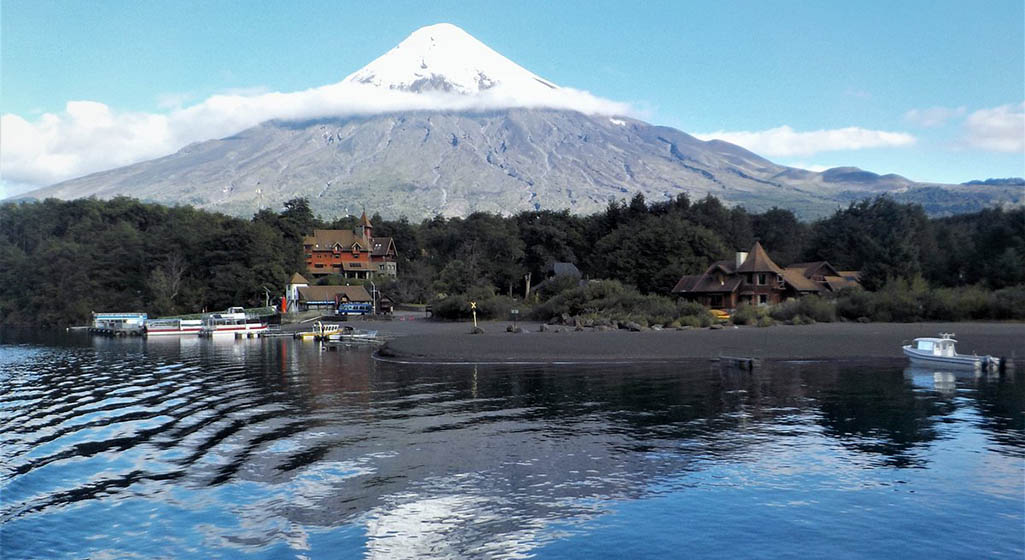
3. Tierra del Fuego National Park
Tierra del Fuego National Park (Parque Nacional Tierra del Fuego) stands as one of Argentina’s most spectacular natural reserves. Nestled at the southern tip of the country, this park is unique for its extensive coastline, making it the only national park in Argentina with direct access to the sea. It encompasses a variety of stunning landscapes, including lush forests, serene lakes, meandering rivers, and rugged mountains. Whether you’re an avid hiker, a nature enthusiast, or simply seeking tranquility, Tierra del Fuego National Park offers an array of experiences.
Hiking Trails
The park boasts a range of hiking trails catering to different skill levels and interests. Each trail provides an opportunity to immerse yourself in the park’s diverse ecosystems, from coastal paths to forested routes and mountainous terrains.
Senda Costera (Coastal Trail)
One of the most celebrated trails in Tierra del Fuego National Park is the Senda Costera, or Coastal Trail. This trail is renowned for its breathtaking vistas and varied landscapes. Here’s a detailed look at what to expect:
Trail Overview:
- Length: Approximately 8 kilometers (5 miles)
- Duration: 3 to 4 hours
- Difficulty: Moderate
Scenic Highlights:
The Senda Costera trail meanders along the shores of Lapataia Bay, offering panoramic views of the water and surrounding landscapes. The trail’s proximity to the bay allows for stunning reflections of the forest and mountains in the calm waters. As you walk, you’ll be treated to a dynamic range of scenery, from dense woodlands to open coastal areas, each offering its own unique beauty.
Flora and Fauna:
- Wildlife: The trail is a haven for wildlife enthusiasts. Keep an eye out for Andean foxes, otters, and various bird species, including white-throated caracaras and Chilean flickers. The park’s rich biodiversity means you’re likely to spot different animals throughout your hike.
- Vegetation: The trail passes through forests of Lenga and Nothofagus trees, providing a glimpse of the park’s lush vegetation. You’ll encounter vibrant mosses, lichens, and various wildflowers along the way.
Photography Opportunities:
The Senda Costera offers numerous spots for capturing stunning photographs. The contrast between the dark green of the forests, the azure blue of the bay, and the stark white of the glaciers creates a visually striking palette. Sunrise and sunset are particularly magical times for photography, as the soft light casts beautiful hues over the landscape.
Rest Areas:
The trail includes several rest areas where you can take a break, enjoy a picnic, and absorb the surrounding natural beauty. These spots provide perfect vantage points for reflecting on the hike and appreciating the serene environment.
Preparation and Tips:
- Weather: The weather in Tierra del Fuego can be unpredictable, so it’s essential to dress in layers and bring waterproof clothing. Conditions can change rapidly, and it’s always best to be prepared for rain and wind.
- Footwear: Sturdy hiking boots are recommended, as some sections of the trail can be uneven and muddy. Good footwear will enhance your comfort and safety.
- Supplies: Carry sufficient water, snacks, and a map of the park. While the trail is well-marked, it’s helpful to have a map for reference.
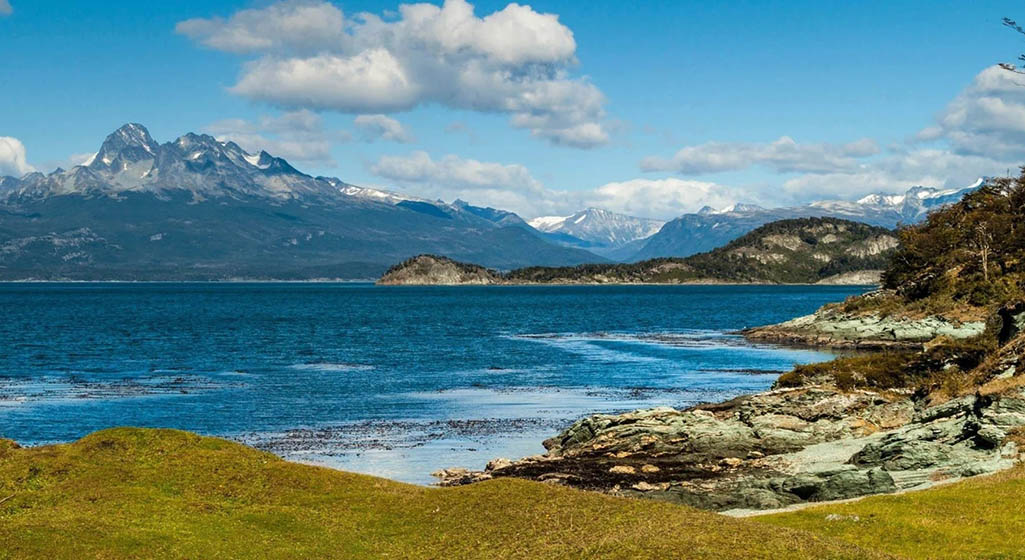
Other Trails and Activities:
In addition to the Senda Costera, Tierra del Fuego National Park offers several other trails and activities:
- Senda Pampa Alta: This trail provides elevated views of the park’s diverse landscapes and is a great option for those seeking a more strenuous hike.
- Senda Hito XXIV: This route takes you to the border marker with Chile, offering insights into the park’s geopolitical significance.
- Camping: The park has designated camping areas where you can experience the natural beauty of the region overnight. Ensure you follow park regulations to minimize your impact on the environment.
Tierra del Fuego National Park is a true gem of Argentina, offering a diverse range of natural wonders and outdoor adventures. The Senda Costera trail, with its stunning coastal views and rich wildlife, is a highlight that encapsulates the park’s beauty and ecological diversity. Whether you’re trekking the trails, spotting wildlife, or simply soaking in the breathtaking scenery, a visit to this southernmost national park promises an unforgettable experience.
The World’s End Post Office
Located within Tierra del Fuego National Park, the World’s End Post Office (Correo del Fin del Mundo) is a unique attraction. This small post office is the southernmost in the world and offers visitors the chance to send postcards and letters with a special “End of the World” postmark. Standing in front of the post office, you can gaze out at the distant Andes Mountains and the vast ocean, feeling the solitude and grandeur of the world’s end.
Ushuaia’s charm lies in its pristine and untamed nature. Every experience here, from sailing on the Beagle Channel to hiking around Lake Esmeralda and exploring Tierra del Fuego National Park, offers a unique blend of adventure and tranquility. In this “End of the World,” you’ll discover that the true essence of travel is not just in the destination, but in the memorable moments and the journey itself.
Ushuaia, the end of the world, awaits your exploration, discovery, and appreciation.

